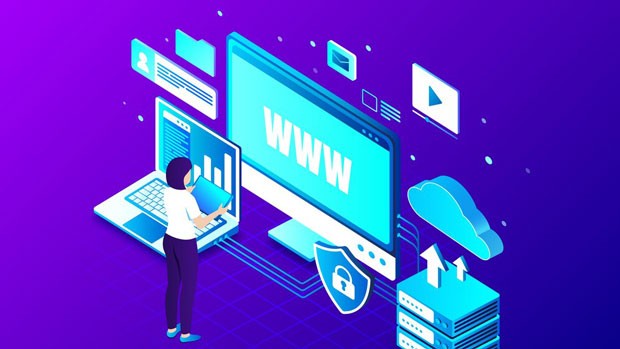In the world of proxy services, PYPROXY has become a popular tool due to its flexible and customizable features. Understanding the core aspects of PyProxy customization, including whitelisting, protocol types, and persistent IP addresses, is essential for optimizing proxy management. This article will provide a detailed analysis of these features, explaining their purpose, functionality, and how they can be applied in real-world scenarios. Each feature is crucial for users looking to enhance their security, control, and network performance, especially for those in industries such as digital marketing, web scraping, and automated systems. 1. Whitelisting: Enhancing Security and Access ControlWhitelisting is one of the most powerful features provided by PyProxy. Essentially, it allows users to create a list of approved IP addresses or domains that are permitted to access their services. This feature plays a critical role in improving security and controlling access to sensitive information or services.- How Whitelisting Works: Whitelisting operates by granting access only to the IP addresses that have been explicitly authorized. When a request is made from an unapproved address, it is automatically blocked. This ensures that only trusted entities can interact with your system, reducing the risk of malicious activities like hacking attempts or unauthorized data scraping.- Use Cases for Whitelisting: In a business context, whitelisting is especially beneficial for companies that deal with sensitive client data or proprietary systems. For example, digital marketing agencies that use automated bots for website scraping can limit the number of requests from unknown sources, thereby reducing the chances of data theft or unauthorized scraping. Additionally, online services with premium content can use whitelisting to grant access exclusively to paying users or internal employees.- Security Benefits: The main security advantage of whitelisting is that it greatly reduces the attack surface. By allowing only specific, trusted IP addresses, businesses can prevent a wide range of cyber threats, such as DDoS attacks, brute-force password attempts, and SQL injection attacks. This level of security is particularly critical for businesses operating in regulated industries, where data protection is paramount.2. Protocol Types: Tailoring Communication for Specific NeedsAnother important feature offered by PyProxy is the ability to customize protocol types. Different applications and use cases require different communication protocols, and PyProxy supports a wide variety of these protocols, providing flexibility for various network environments.- Understanding Protocol Types: A protocol defines the rules and conventions for communication between devices over a network. Commonly used protocols include HTTP, HTTPS, SOCKS5, and others. Each protocol has its advantages and is suited to different types of traffic and security requirements.- Why Protocol Selection Matters: Choosing the right protocol can significantly impact network performance, security, and compatibility with other systems. For example, sock s5 proxies provide more versatility than HTTP proxies by handling a wider range of traffic types and offering better anonymity. On the other hand, HTTPS is ideal for encrypted communication, ensuring data integrity and confidentiality, especially when handling sensitive transactions such as online banking or e-commerce.- Customization Options: PyProxy enables users to specify the exact protocol type they need, whether for specific applications, regions, or even device types. This level of customization ensures that traffic is routed optimally, reducing latency and improving response times for users. For companies in fields like media streaming, e-commerce, or cybersecurity, having the ability to switch between protocols can be a game-changer in terms of performance and security.- Applications in Web Scraping and Automation: When performing automated web scraping or bot operations, the ability to customize the protocol ensures smooth and uninterrupted service. Some websites are more sensitive to certain protocols, while others might block traffic based on protocol type. By selecting the appropriate protocol, businesses can ensure that their scraping or automation efforts remain undetected and efficient.3. Persistent IP: Consistency and Reliability in ConnectionsPersistent IP, also known as sticky IP, is a feature that ensures the same IP address is maintained for the duration of a user session or interaction with a server. This feature is particularly useful in scenarios where consistency in identity is important, such as in web scraping, API usage, and digital advertising.- What Persistent IP Means: Normally, proxy services may rotate IP addresses regularly, especially when managing large-scale scraping tasks or when dealing with frequent access requests. While this enhances anonymity and security, it can sometimes cause issues with services that expect a consistent IP address to be used over time. Persistent IP solves this problem by "sticking" a single IP address to a session, ensuring that the same address is used consistently for all requests during that session.- Use Cases of Persistent IP: In industries like digital advertising, persistent IPs can be crucial for maintaining account health. For example, advertising platforms often detect frequent changes in IP addresses and may flag accounts for suspicious activity. With persistent IPs, advertisers can ensure their account remains safe while interacting with the platform, as the system recognizes their consistent online presence. In web scraping, persistent IPs can be vital for bypassing anti-scraping mechanisms that detect and block frequent changes in IP addresses. Some websites track behavior over time, and using the same IP address helps avoid suspicion. Persistent IP can also improve session management, particularly for services that require login credentials and rely on user session consistency.- Benefits of Using Persistent IPs: The primary advantage of using persistent IP is reliability. Users can expect a stable connection without worrying about being disconnected or needing to re-authenticate every time their IP changes. This stability is especially important in industries that require high availability and low downtime, such as e-commerce, finance, and customer support.- Implementing Persistent IP for Long-Term Projects: For long-term projects like automated testing or continuous web scraping, maintaining a persistent IP address ensures uninterrupted service and minimizes disruptions caused by IP address rotation. Businesses can schedule their tasks or automate processes without needing to constantly monitor or adjust their proxy settings.Conclusion: Optimizing Proxy Usage with PyProxy's Custom FeaturesPyProxy offers a range of customizable features that empower businesses and developers to fine-tune their proxy configurations according to their specific needs. Whitelisting, protocol type selection, and persistent IP address options all provide significant benefits in terms of security, network performance, and operational efficiency.Understanding and utilizing these features can help users mitigate risks, optimize resources, and enhance overall system performance. Whether it's protecting sensitive data, ensuring consistent connectivity, or selecting the optimal protocol for different types of traffic, PyProxy’s customization options provide powerful tools to manage and streamline network operations effectively.For businesses in need of secure, flexible, and efficient proxy management, PyProxy offers a comprehensive solution that can be tailored to fit the unique requirements of various industries. By leveraging these features, organizations can achieve enhanced security, greater control, and improved performance in their networking activities.
Nov 11, 2025



































































